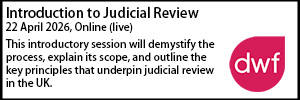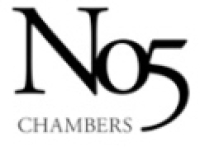- Details
London councils pursue four-borough shared legal service
A group of London councils are poised to give the green light over the next week to the creation of a shared legal service spanning four boroughs.
The proposed agreement would see the legal departments at the Royal Borough of Kingston upon Thames and the London Borough of Sutton link up in October 2013 with the existing shared service between Merton and Richmond councils.
The model would see the delivery of legal services carried out by the shared service hosted by Merton, which will act as lead authority.
However, Sutton and Kingston would each retain a monitoring officer and corporate lawyer role, who would also act as an intelligent client and commissioner.
This post is intended to develop into a more proactive and supportive role in the overall corporate governance of the councils in terms of legal and procedural compliance, rather than have a focus on transactional legal work.
It is estimated that each authority will save £100,000 over the next four years if the project goes ahead.
A report recommending agreement to the establishment of the four-borough model went before Sutton’s strategy and resources committee on Monday (11 February), while similar reports will go before Richmond’s Cabinet and Kingston’s policy and resources committee tomorrow (14 February), and Merton’s Cabinet a week on Monday (18 February).
A ‘mirrored transition option’ has been recommended for implementation ahead of three other options: a simultaneous transition of all organisations at the same time; a transition of one authority at a time; and a transition by service area.
The chosen approach would mean that the Richmond and Merton shared service and the Sutton and Kingston legal teams would move to a proportionately mirrored structure by the agreed implementation date.
During this period, staff from Kingston and Sutton would be physically located alongside Merton and Richmond within a single structural entity. Initially, however, they would focus on their current clients.
This approach is considered to be low risk, with no impact on Merton and Richmond’s ‘business as usual’.
After the implementation date, there will be a gradual merging of the work across the relevant teams. The four authorities have around 50 solicitors between them.
The governance arrangements for the new service would include an officer executive board, chaired by the chief executive of Merton (as lead authority) and with relevant member oversight. Client service representation will also be sought.
The reports said that, in terms of implementation, there would need to be specific considerations around:
- Shared project governance arrangements and oversight, including members and client directorate involvement as appropriate;
- Cost sharing and benefits;
- Staffing, structures and TUPE arrangements;
- Accommodation;
- ICT; and
- Communications.
On the potential for savings, the reports said: “It is projected that the service through the economies of scale and the adoption of improved ways of working will continue to provide lower costs and better quality services.”
External legal spend is expected to reduce as a result of the increased physical capacity. There are also set to be one off savings for the authorities in relation to legal books and resources, while Sutton and Kingston will be able to move from their old case management systems (purchased in 1996 and 1998 respectively) to the one recently installed by Merton and Richmond.
An agile technology strategy is to be developed, considering issues such as mobile working options, ‘touch down’ locations and their connectivity, and mobile phone strategy.
Kingston and Sutton had originally conducted individual reviews of their internal legal services and also carried out a feasibility study into setting up their own shared service.
However, discussions between the four authorities’ chief executives led to a further piece of work being done on a four-borough model. “It was apparent that there would be advantages in four boroughs sharing a service and therefore, amplifying the benefits and efficiency for all participants,” the committee reports said.
The reports also revealed that the Merton and Richmond shared service had been judged to be a success, with savings of between 16-20% and two thirds of internal customers reporting an improvement to service quality.
The reports also said: “In addition the service has increased resilience and delivers ongoing efficiencies in streamlining its processes and reducing external legal costs. Staff surveyed agreed that the shared service has worked and have clear performance and customer led culture.”
Philip Hoult
Contracts Lawyer
Legal Director - Government and Public Sector
Regulatory/Litigation Lawyer
Governance Lawyer
Solicitor - Litigation
Legal Adviser
Deputy Director Legal and Democratic Services
Lawyer (Planning and Regulatory)
Solicitor/Lawyer (Contracts and Procurement)
Antisocial Behaviour Legal Officer
Locum roles
 Masterclass – MCA and Court of Protection - Legal Update - Peter Edwards Law Training
Masterclass – MCA and Court of Protection - Legal Update - Peter Edwards Law Training
21-01-2026
Online (live)
 Managing settlements: the legal and practical issues, and the pitfalls to avoid - Blake Morgan
Managing settlements: the legal and practical issues, and the pitfalls to avoid - Blake Morgan
22-01-2026 10:00 am
Online (live)
 Children and Young People (DoL, Competency and Capacity) - Peter Edwards Law Training
Children and Young People (DoL, Competency and Capacity) - Peter Edwards Law Training
28-01-2026
Online (live)
 HMPL Building Blocks: Legal Tools to Combat Anti-Social Behaviour - Devonshires
HMPL Building Blocks: Legal Tools to Combat Anti-Social Behaviour - Devonshires
17-02-2026
Online (live)
 Freedom of thought, belief and religion: Article 9 ECHR - Francis Taylor Building
Freedom of thought, belief and religion: Article 9 ECHR - Francis Taylor Building
19-02-2026
Online (live)
 Grappling with S73 - variations of conditions applications or appeals - Ivy Legal
Grappling with S73 - variations of conditions applications or appeals - Ivy Legal
09-03-2026
Online (live)
 HMPL Building Blocks: Tenancy Management – Assignment, Mutual Exchange and Succession - Devonshires
HMPL Building Blocks: Tenancy Management – Assignment, Mutual Exchange and Succession - Devonshires
12-03-2026
Online (live)
 Section 31(2A) Senior Courts Act: where have we got to? - Francis Taylor Building
Section 31(2A) Senior Courts Act: where have we got to? - Francis Taylor Building
18-03-2026 1:00 pm
Online (live)
 Save the Date: The Law of Public Rights of Way, Commons and Town or Village Greens Seminar (Hybrid) - Francis Taylor Building
Save the Date: The Law of Public Rights of Way, Commons and Town or Village Greens Seminar (Hybrid) - Francis Taylor Building
25-03-2026
London
 HMPL Building Blocks: A Housing Officer’s Guide to Court Proceedings - Devonshires
HMPL Building Blocks: A Housing Officer’s Guide to Court Proceedings - Devonshires
14-04-2026
Online (live)




























































































































 First Aid Level 3 - LBL Skills
First Aid Level 3 - LBL Skills  Capsticks Housing Diploma
Capsticks Housing Diploma  Standish 18 months on - 42BR
Standish 18 months on - 42BR  Accelerating EV Charging Infrastructure in the Public Sector - DWF
Accelerating EV Charging Infrastructure in the Public Sector - DWF  Building Safety Act Conference 2026 - Landmark Chambers
Building Safety Act Conference 2026 - Landmark Chambers  Education Law Conference - 3PB
Education Law Conference - 3PB  Annual Planning Seminar 2026 - No.5 Barristers
Annual Planning Seminar 2026 - No.5 Barristers 